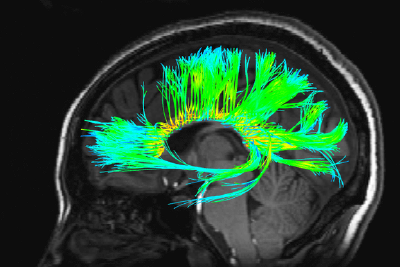Alzheimer’s disease can be diagnosed. The advantage of this technique is its simplicity and the ability to identify disease at an early stage when it is difficult to diagnose. The research results were published in the open access professional academic journal “Communication Medicine”.
Doctors currently use a number of tests to diagnose Alzheimer’s disease, including memory and cognitive tests and brain scans. The scans are primarily used to examine protein deposits in the brain and contractions in the hippocampus, an area of the brain associated with memory, all of which can take weeks to schedule and process. But the newly developed method requires only a magnetic resonance imaging (MRI) brain scan on a standard 1.5 Tesla machine common in most hospitals.
The researchers took an algorithm for classifying cancer tumors and applied it to the brain. They divided the brain into 115 regions and assigned 660 different characteristics, such as size, shape and texture, to assess each region. They then trained algorithms to recognize changes in these characteristics to accurately predict Alzheimer’s disease.
Using data from the Alzheimer’s Disease Neuroimaging Program, the team conducted more than 400 early- and late-stage Alzheimer’s disease patients, healthy controls, and patients with other neurological disorders, including frontotemporal dementia and Parkinson’s disease. brain scan.
The study found that in 98 percent of cases, an MRI-based machine learning system could accurately predict whether a patient had Alzheimer’s disease. It was also able to distinguish between early and late Alzheimer’s disease with reasonably high accuracy in 79 percent of patients.
The new system successfully uncovered changes in brain regions previously thought to be unrelated to Alzheimer’s, such as the cerebellum (the part of the brain that coordinates and regulates physical activity) and the ventral diencephalon (related to senses, vision and hearing) , opening up potential new avenues for studying the link between these regions and Alzheimer’s disease.
Spacesrobot point of view
First there are some signs, then clear symptoms, such as memory loss, temperament changes, cognitive dysfunction, and then tests, such as EEG, head CT, magnetic resonance and biomarker tests, to confirm a diagnosis – Whether it is Alzheimer’s disease. Today, the use of ordinary instruments and new machine learning algorithms can greatly reduce the time required for diagnosis and the time it takes to make a diagnosis, and I believe it can also alleviate the psychological suffering of some family members. At the same time, this learning system has also newly discovered the connection between some areas of the brain and Alzheimer’s disease. It can not only assist in the diagnosis, but also is expected to bring Alzheimer’s disease research to new fields.




GIPHY App Key not set. Please check settings